Crystal Frasier is a girl from small-town Florida who now has twenty years’ experience writing for comics, fiction, and games. She has contributed to major brands like Pathfinder and Dungeons & Dragons, as well as small-press projects and anthologies, but she got her start self-publishing transgender-focused webcomics. Today Crystal is the proud mama of two energetic corgis, Calamity and Adamant.
Val Wise is a cartoonist originally from Clearwater Beach, Florida. He’s contributed to a handful of anthologies, including Dates! and Wayward Kindred, as well as projects like Rolled & Told. He currently lives in the Southern U.S. with his husband, two best friends, and two talkative cats named Biscotti and Ciabatta.
I had the opportunity to interview both Crystal and Val, which you can read below.
First of all, congratulations on your upcoming book, Cheer Up: Love and Pompoms. Could you tell us a little about the book?
CF: Cheer Up! is a sweet, sometimes dramatic, sometimes sarcastic look at being a queer kid in high school, using the friendship and drama of a cheerleading squad as the template. It looks at how we grow and become better people because of the friendships we form, and also there are girls falling in love and smooching.
What was the inspiration for Cheer Up? Were there any stories or media you drew upon for inspiration while creating it?
CF: The book actually started as a random thought one day on a very long escalator ride, about trans youth winning more acceptance and recognition, and how nice it could be to just have small, happy stories about trans kids making friends and falling in love. A friend had mentioned the comic Check Please earlier that day and even thought I hadn’t gotten to read it, I thought the idea of gay romance set against such a strongly male-coded activity like hockey was wonderful and thought that the same thing for girls would be something like cheerleading, and that spun together into what if there was a sweet story about two girls on their school’s cheerleading squad, falling in love?
A lot of the details didn’t develop until I teamed up with Val. We realized we grew up within a few miles of each other on the gulf coast of Florida, and it’s an area with a distinctive feel and culture, so we decided to set the book there. That fleshed out a lot of the side-character personalities by drawing on people I knew (including some of my friends from high school who were on the cheer squad) and places we visited. It all made the story feel a lot more real and easier to write.
How did you both get into comics?
CF: I started young. When my mother was teaching me to read, she noticed I struggled less with the newspaper comics than I did with my young reader books. So she started buying me comics at the grocery store to practice with. Neither of us knew it at the time, but I was dyslexic, and having the text in all capital letters, in clearly divided subsections, made reading a lot easier. That grew pretty quickly into a lifelong love of combining art and literature.
VW: Art runs on my dad’s side of the family – my dad especially is a big comic book fan. I grew up reading Tales from the Crypt (his influence) as well as a LOT of shoujo manga (Tokyo Mew Mew, Pita-Ten, Sugar Sugar Rune, etc.). I used to lay on the floor drawing comics on printer paper when I was in elementary school. I didn’t consider comics as a career path until I was a senior in high school, but I’ve been drawing comics for pretty much my whole life!
What are some things about the industry that surprised you upon entering it? What things do you wish you had known when you first started?
CF: When you see the slick, final product, it’s easy to imagine everyone i the comics industry is very professional, has a clear plan, and knows exactly what they’re doing at all times. That is not generally the case. Comics—the whole publishing sector—is kind of a chaotic sprawl behind-the-scenes and can be pretty confusing to navigate. So much of success and getting work relies on who you know. Cheer Up only came to be because I know Jay Edidin and Amy Chu and they both knew my earlier writing work and believed in me and talked me up to Oni. So I suppose I really wish I’d known to start attending comic conventions and networking with editors and writers sooner.
VW: It wasn’t a surprise necessarily, but I didn’t fully grasp how many different roles + jobs you have to juggle when you’re working as a freelancer — and this includes day jobs! Though I’m VERY lucky to be a full time freelancer now, I worked food service + barista jobs while I was working on Cheer Up!. There’s no shame in needing a day job to pay the bills, but it can be draining to have very limited free time. The most helpful thing for me in this regard was finding ways to simplify my art style to make drawing quicker and easier – especially simplifying the things I liked to draw the least!
Right now, the Young Adult publishing and comics industry seems to be experiencing a wave of queer sports narratives, including Fence, Check Please!, and more. What are your thoughts on this shift and what do you think is so gay about sports narratives?
CF: I’m all for it. I’m in favor of more gay stories in every genre. Heck, I have a gay noir mystery series I’m currently shopping around. But I think it works well with sports because these tend to be gendered spaces to begin with; for a straight romance, one party by necessity has to be an outsider to that unit, but with a gay romance you can keep the story contained within group you’ve already developed. And sports stories are already about people perfecting themselves, pushing their limits, developing close connections to others; it’s a natural progression for these to all build to romance. Sports are gay.
VW: There’s a stereotype, I think, that gay people don’t like sports (as a lifelong baseball fan I’m bravely breaking this mold, haha). But even in straight/assumed straight sports stories, there’s so much love between the members of the team. I think these narratives have often served a “safe” way for straight people to find intimatcy with people of the same gender — it only makes sense that queer writers would take that a step further.
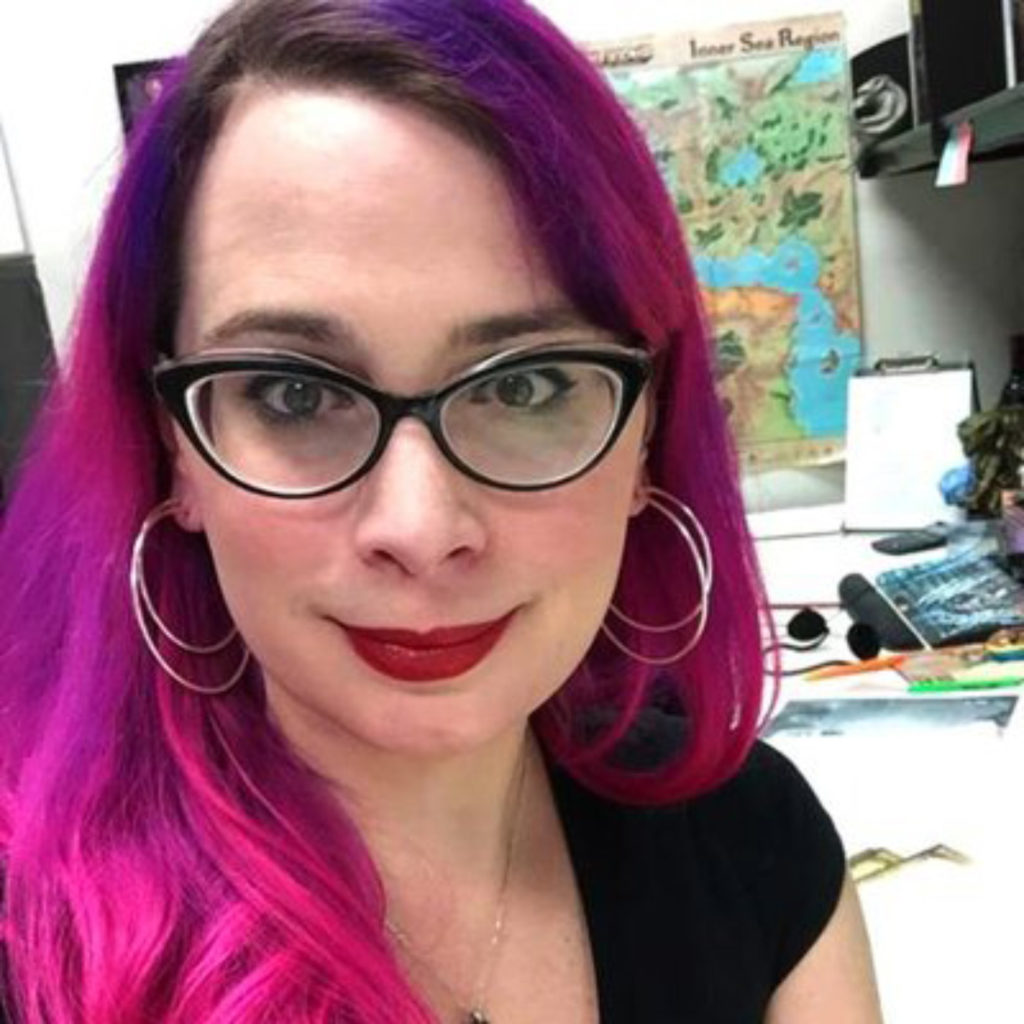
In the increasing field of trans representation in media, there still seems to be a lack of depictions of trans people who aren’t straight? Was Bebe created intentionally with this in mind?
CF: One of the big goals of my adult life has been adding more and better trans representation to any medium I can get my hands on. Bebe’s sexuality—and I’m not sure she really knows what it is yet except Annie-sexual—wasn’t really made as a queer political statement about trans narratives so much as it was to add some trans representation to the girl/girl romance genre.
For those curious about the process behind a graphic novel, how would you describe the process? What goes into creating a script and collaborating with an artist to translate that into panels?
CF: A graphic novel starts out as a pitch—a few paragraphs to a few pages talking about the book, it’s target audience, its characters, and the rough trajectory of its story. This is sometimes paired with character sketches from the artist (although Cheer Up was pitched without an artist attached; Oni hooked Val and I up after approving the project).
Either during or after the pitch process, the writer and artist work together to design the major characters of the story and flesh out some more specific twists and turns for the story to take. This is the stage where we established that Annie was a little metalhead and that the Anole existed, that Annie’s mom was basically the coolest mom in the world, that Annie and Katrina had a history and Annie would show growth by apologizing for it, and we could show Bebe learning assertiveness by having her stand up to her loving but overbearing parents. You take these character concepts and the big set piece moments you know you want and start building an outline that connects those moments together; basically a list of bullet points.
Once you’ve got your characters and your big moments and your outline, you start writing. I think the first draft of Cheer Up took me two months, with revisions and suggestions along the way from our editors to help spot story problems or find small improvements.
Once you have a rough script, the artist can go to work while the writer starts trying to get the dialogue just right. The artist usually starts with thumbnails; tiny sketches of each page just to block in the panel layouts and the character placement. Then they start actually drawing pages, starting with sketches or “pencils” that are rough but a little tighter than the thumbnails. This is the stage where you make the most artistic changes, tweaking who might be in a scene or the expressions or the action. After that, the artist starts inking the final lines, and then the colorist comes in to give everything some life.
Usually while the art is happening, the writer and editor are tinkering with the script as well, not changing any of the action but toying with the dialogue to get the final “lettering script.” This lettering script gets handed off to the letterer who adds all the word balloons, text, sound effects, signs—anything involving letters.
Once you have the text and the colored pages, everything comes together into what’s called “proofs,” your final proof of concept that shows what the book will be when it’s done. Those proofs go to several editors, the artist, and the writer who all read over them and search for any errors—typos, word balloons pointing at the wrong character, coloring errors, unintentional racism or sexism—and fix it before the book is finally approved and sent to a printer to be printed, packaged up, and sent out to stores.
VW: While Crystal was writing the script, I worked on concept art for the characters and environments. This made it a lot easier once I got to the thumbnail stage, because I already had a good idea of what pretty much every location would look like. For Cheer Up!, I did the thumbnails all at once, then the pencils, then inks, etc. I prefer to work this way, because it kind of feels like building a house. The thumbnails are the blueprints, so I like having them done all at once, so I always know exactly what I’m working towards once I start drawing the comic itself.
On my end, the script is already broken down into individual pages and panels. Crystal’s pacing was already so spot on with the script, that it honestly made my job pretty easy! It was very easy to have a visual for what the final page would look like, just from looking at the words on a page.
As queer creators, did you ever draw upon your own experiences and insights when creating your work?
CF: All the time. My life when I first came out was… fast-paced, and if nothing else it gave me a very rich collection of experiences I can draw on to tell stories. A lot of Bebe’s awkwardness and not wanting to start drama is lifted entirely from my own people-pleasing nature in high school, and a lot of Annie’s bravado is from the mask I wore later once I gained just enough confidence to fake having a lot of confidence.
VW: Of course! I think this is especially apparent for me in Edie’s fashion choices – I pulled a lot from my own experiences of exploring my gender through clothing in high school, as well as when I first started transitioning as an adult.
What is your favorite thing about making comics? What if your favorite thing about fandom, especially queer fandom?
CF: I love how well art and words play together to tell a living story that’s different from either. It really plays with how good the human imagination is at filling in details—like when you read a novel—but also stimulating the visual side of your brain the way television, film, or other visual arts do.
And queer fandom is its own beautiful beast. I still remember being run out of Sailor Moon fan forums in the ‘90s because at the time I strongly identified with Sailor Jupiter and read her as a trans girl like me—in the ‘90s there was no mainstream queer representation, and little queer kids had to read between the lines to find anything that reflected us—and even though I wasn’t arguing that as canonical fact, even the suggestions that Makoto could be trans was read as insulting and disrespectful. The refrain you heard over and over again in fandom spaces toward any queer reading of the text was “if you don’t like it, go make your own,” ignoring the fact that obviously we liked it or else we wouldn’t be in those fan groups to begin with.
Regardless, queer fans grew up and started making out own stories both out of love but also, I think, from a heavy dose of spite. Now you have comics like Check Please, Young Avengers, Avant-Gardes, Backstagers, Mooncakes, Nimona—just a slew of amazing queer stories in addition to queer updates of classic properties like Supergirl and She-Ra. Queer fandom is the next generation of queer creators.
VW: The creation process of making comics is my favorite part (especially inking), but there is something really special about holding something complete that you made in your hands. I love the passion in queer fandom, since there’s so little media made specifically for us. I think queer readers pick up on a lot of things that other readers don’t, and it makes creating a queer comic feel like a much more personal and intimate experience.
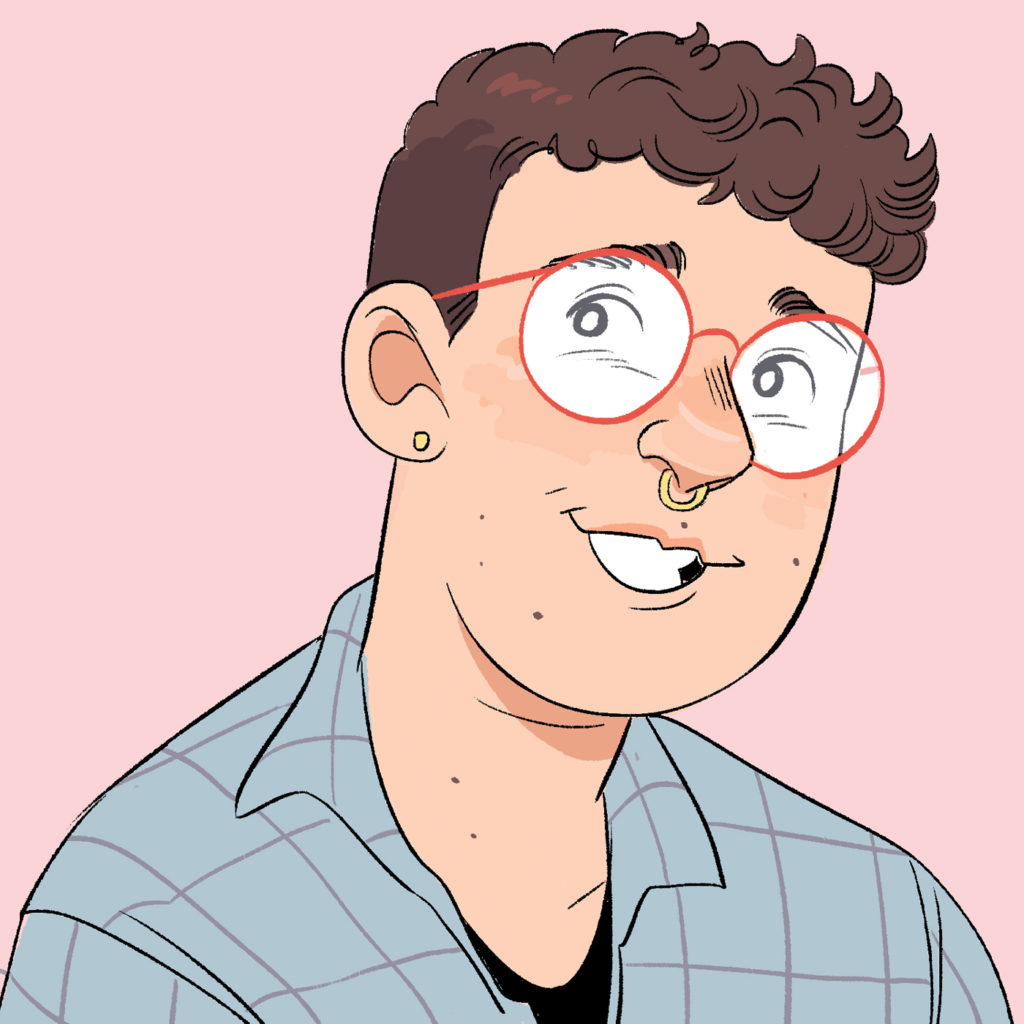
Can you give us any trivia about the main characters of Cheer Up!?
CF: I can tell you some things from their character sheets that never quite made it into the text of the comic:
- Bebe is half-Cuban on her father’s side, but neither she nor her father speak much Spanish. When her grandparents emigrated to Florida, they were worried speaking Spanish would label their kids as outsiders and end up with them being made fun of in school, so they refused to teach bebe’s father or his sisters any Spanish. Bebe worries it makes her “not really Cuban,” so she doubles down on trying to master Cuban cooking—while her dad wont admit it out loud, she’s already a better cook than his mother was.
- Annie loves manatees and once swam with them in the Hillsborough River.
- For Annie, we had originally planned to plaster her stuff in stickers from her favorite fictional bands, and I even sketched up logos for all of them, but didn’t have time to design the stickers before things went to print. Her favorite bands include: the Dung Beatles, the Marthas, Sweet Rose Riot, Charon, Land-O-Goshens, Dead Donna Reed, and the Twits.
- Jonah smells like garlic, one of his favorite foods.
- Coach Dupont and Celeste (Annie’s mom) were best friends in high school and raised all kinds of hell in the ‘90s. They shared a very awkward first kiss that didn’t really go anywhere.
VW: I based the design for Annie’s bedroom on my own from childhood – down to the pink walls and Florida essential ceiling AND floor fans.
What’s a question you haven’t been asked yet, but wish you were asked (as well as the answer to that question)?
CF: “Were you a cheerleader?” And the answer is no, but with most other interviews about sports stories, I see the writers get asked if they had much experience with the sport involved, and I really hate the assumption that I couldn’t have been because I’m transgender. The real reason I couldn’t be a cheerleader is because I was goth.
VW: No one so far has asked about specific places from my + Crystal’s hometowns that I used as reference, but I kind of like leaving that a mystery for people from around Tampa Bay to figure out, haha.
What advice would you have for those aspiring to enter the comics industry, whether as writers or artists?
CF: Best advice ever is just to make friends and help each other practice. Brainstorm together, read each other’s work, edit each other’s work, get excited for each other. It makes you a better writer, it makes you a better editor, and it means that any contacts they make inevitably become contacts you make.
As with most things in life, the secret to success is “don’t be a dick.”
VW: Don’t undersell yourself! Art is often a very personal craft, and it’s easy to tie your worth as a person to your art, or your art to how you feel about yourself as a person. So hyping yourself up can feel a little awkward (especially with self-deprecating artist jokes being a constant). Yes, it’s important to know your weaknesses, but it’s even MORE important to be proud of your strengths! There’s no shame in loving your own art, or in advocating for yourself as an artist. If someone is reaching out to you for work, they want your work – don’t be afraid to ask for the rates and accommodations you need.
What queer books/comics would you commend to the readers of Geeks OUT?
CF: My perennial favorites are the Backstagers and Lumberjanes, but I also fell in love with Lila Sturges’ Girl Haven and can’t recommend that enough if you like fantasy, sapphic romance, or trans narratives.
VW: Right now I’m reading She Drives Me Crazy by Kelly Quindlan, and Ace of Spades by Faridah Àbíké-Íyímídé — and I would absolutely recommend both. As a fan of dark academia, I really think Ace of Spades cuts much deeper than other books that fit within this genre/aesthetic are prepared or willing to go.

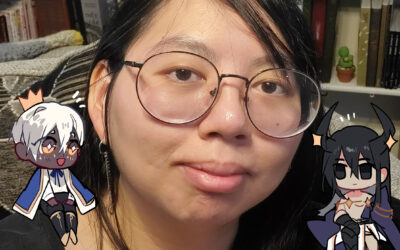
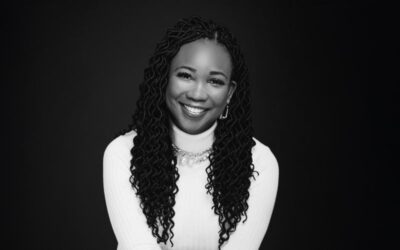
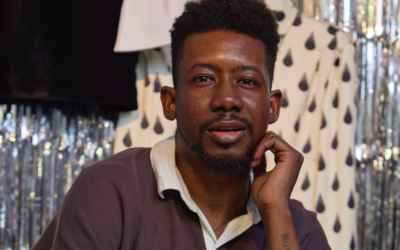
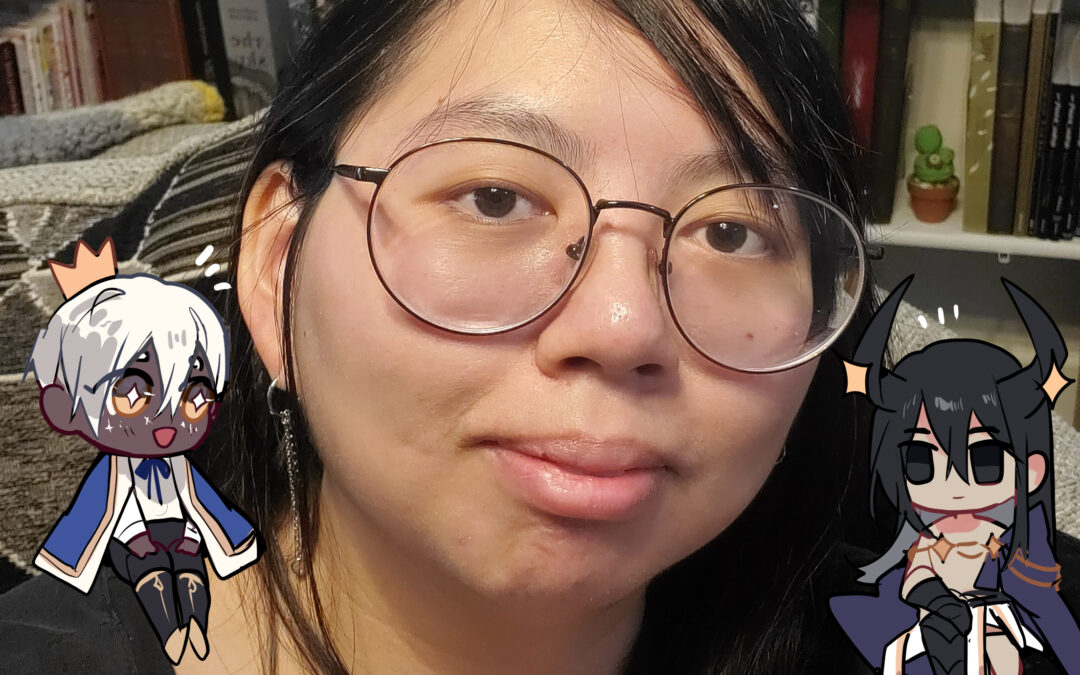
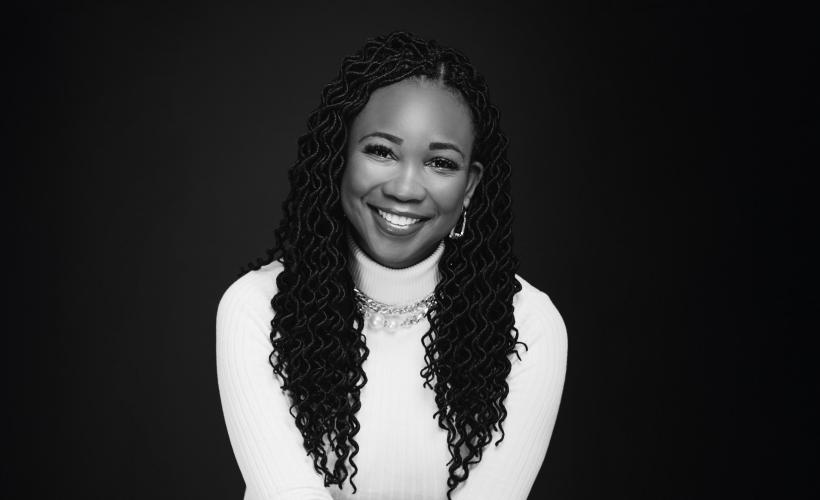
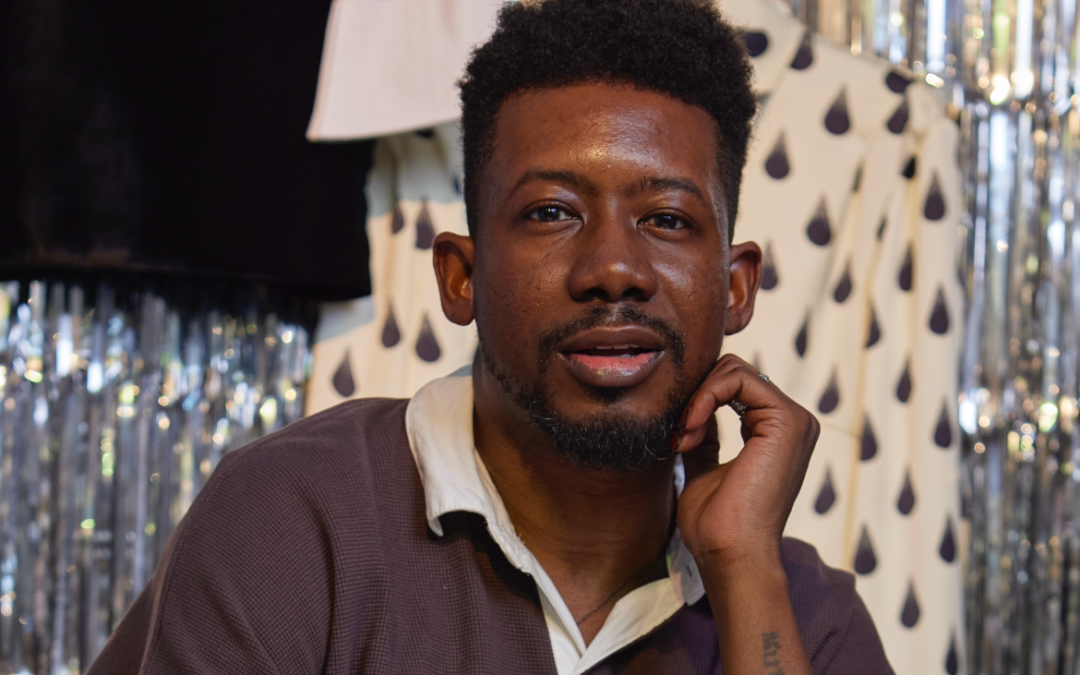
0 Comments